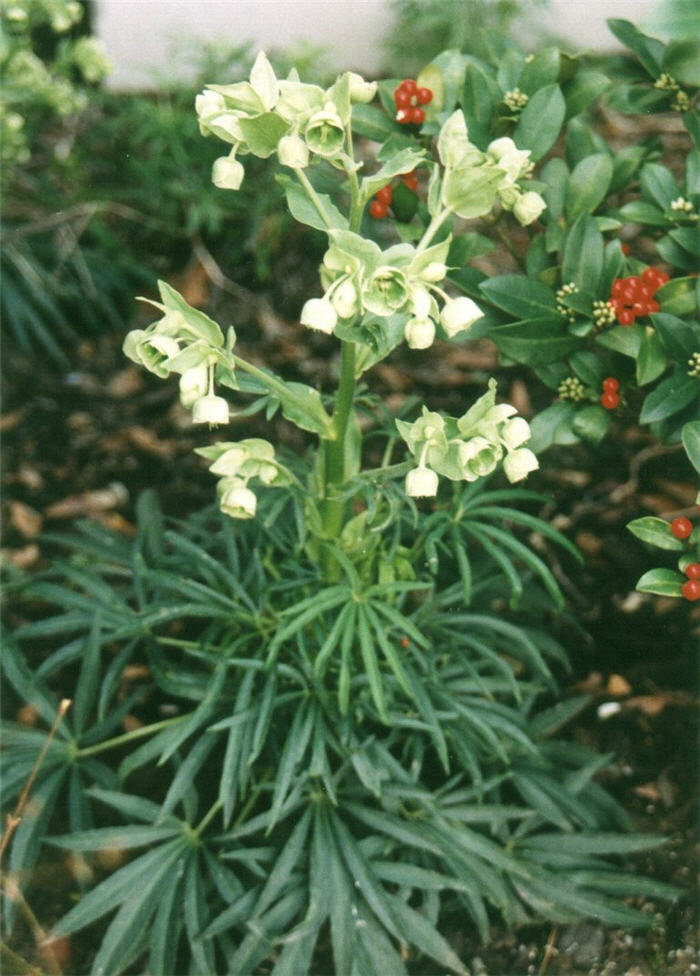| Botanical Name: Helleborus foetidus | |
| Common Name: Stinking Hellebore |

-
Anatomy
-
Culture
-
Design
Plant Type
Broadleaf Evergreen, Perennial
Height Range
1-3'
Flower Color
Green
Flower Season
Spring
Leaf Color
Dark Green
Bark Color
n/a
Fruit Color
n/a
Fruit Season
n/a
Sun
Half, Shade
Water
Low, Medium
Growth Rate
Slow
Soil Type
Sandy, Clay, Loam, Rocky
Soil Condition
Average, Rich, Well-drained, Dry
Soil pH
Neutral
Adverse Factors
Attracts Bees
Design Styles
English Cottage, Formal, Japanese, Mediterranean, Ranch, Spanish, Woodland
Accenting Features
Showy Flowers
Seasonal Interest
Winter, Spring
Location Uses
Entry, Shrub Border, Raised Planter
Special Uses
Naturalizing, Small Spaces
Attracts Wildlife
n/a
Information by: Stephanie Duer
Photographer: Linda Engstrom
Photographer: Linda Engstrom
-
Description
-
Notes
This species of Hellebore has evergreen leaves that are deeply lobed, creating a ferny effect. The flowers are light green, cup-shaped, small, and nodding. the plant grows about 18 to 24 inches tall and about 18 inches wide. Some find the foliage when it is crushed, and the flower to have a somewhat unpleasant smell, though maybe that concern is overstated. Seeds are prolific and the plant, if well sited, will colonize; a lovely thing in a woodland garden. They are much loved by bees.
Grow in well drained, loamy to coarse soil in part shade to part sun; hellebore is not very heat tolerant so be certain that it receives shade during the hottest part of the day in the summer months. Plant where it will receive some protection from drying winter winds. Though evergreen, some leaves may look tatty after our long winters, and so snip them off near the base of the plant for a tidy appearance. though they appreciate regular watering, when in a part sun setting with well amended soil they can be remarkably drought tolerant. Visit hellebores.org for more information.